Month: May 2022
The myth of the white male scientific genius – and why its time is up
Will Dunn in New Statesman:
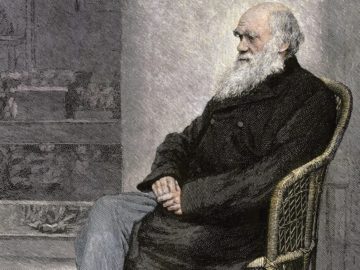 “If I have seen further,” Isaac Newton wrote to his fellow scientist Robert Hooke in 1675, “it is by standing on the shoulders of Giants.” Long seen as our greatest scientist’s greatest line, it may have been a sarcastic joke: Hooke, a rival who had claimed credit for Newton’s discoveries and whom Newton came to dislike intensely, was a short man. It was true, however, that Newton was supported by people who remained unseen. This was very much the case with his finances: Newton was an investor in the slave trade. He bought thousands of shares in the South Sea Company, the principal enterprise of which was to transport people from Africa to the Americas. Newton invested in this business for over a decade, making a significant profit (and then losing it in the crash of 1720).
“If I have seen further,” Isaac Newton wrote to his fellow scientist Robert Hooke in 1675, “it is by standing on the shoulders of Giants.” Long seen as our greatest scientist’s greatest line, it may have been a sarcastic joke: Hooke, a rival who had claimed credit for Newton’s discoveries and whom Newton came to dislike intensely, was a short man. It was true, however, that Newton was supported by people who remained unseen. This was very much the case with his finances: Newton was an investor in the slave trade. He bought thousands of shares in the South Sea Company, the principal enterprise of which was to transport people from Africa to the Americas. Newton invested in this business for over a decade, making a significant profit (and then losing it in the crash of 1720).
Art cannot exist without its creator, whatever else they may have thought or done. But knowledge – especially the natural laws of physics and mathematics – is discovered. Why mark it with the personal lives or beliefs of the individuals who found it? As the historian James Poskett points out in Horizons, which tells the story of the global roots of modern science, there are many good reasons to do just that. The call to “decolonise” subjects by acknowledging their cultural context is seen by some as needlessly political, but Poskett argues that science was already politicised. The idea that scientific revolutions are the preserve of the European male genius – Newton, Darwin, Copernicus, Galileo, Einstein – is, he argues, a political project to reinforce the idea that people who support a particular system of government, or live on one side of a border, are more curious, inventive and adept than others.
More here.
Treatment for myelodysplastic syndrome by hypomethylating agents may activate an oncogene
From Phys.Org:
 Hypomethylating agents (HMA) are currently used as a first-line treatment for patients with myelodysplastic syndrome (MDS), and increasingly in other diseases, but their mechanism of action is not clear. HMAs may affect many genes and could potentially activate an oncogene—a gene that contributes to the development of cancer—but this has not been clearly demonstrated to date. To test this, investigators from Brigham and Women’s Hospital, Harvard Stem Cell Institute and collaborators studied how HMA affects known oncogenes. They found that HMA activated the oncofetal protein SALL4 in up to 40 percent of patients with MDS, leading to poor patient survival, even in patients in clinical remission. The findings may apply to other cancers and diseases in which HMA are being used.
Hypomethylating agents (HMA) are currently used as a first-line treatment for patients with myelodysplastic syndrome (MDS), and increasingly in other diseases, but their mechanism of action is not clear. HMAs may affect many genes and could potentially activate an oncogene—a gene that contributes to the development of cancer—but this has not been clearly demonstrated to date. To test this, investigators from Brigham and Women’s Hospital, Harvard Stem Cell Institute and collaborators studied how HMA affects known oncogenes. They found that HMA activated the oncofetal protein SALL4 in up to 40 percent of patients with MDS, leading to poor patient survival, even in patients in clinical remission. The findings may apply to other cancers and diseases in which HMA are being used.
“SALL4 is an embryonic stem (ES) cell gene and leukemic stem cell factor, and it belongs to a new class of oncofetal gene. Gain-of-function SALL4 transgenic mice develop MDS and acute myeloid leukemia (AML), as well as liver tumors. Loss-of-function studies demonstrated that SALL4 is essential for the survival of cancer cells, including leukemic cells by regulating multiple survival pathways. Our data suggest that MDS patients receiving HMA treatment should be monitored for demethylation and upregulation of oncogenes such as SALL4, which we found are linked to poor outcomes, and these patients should be provided with an additional combination therapy,” said lead author Li Chai, MD, of the Brigham’s Department of Pathology.
More here. (Note: I, along with the entire Oncology community, have been prescribing these FDA-approved drugs for twenty years to our unsuspecting patients.)
Thursday Poem
And Still They Come
—for Dr. Sue
You scream your bullhorn lies, intimidate,
Harass, respect no law of man. You speak
Of scalpels, sutures, and sterility,
Dismemberment, death by regret, all lies,
And bear false witness with each one against
Your neighbors – us, and all who come to us
With hope of better days. And still they come.
The patients come, each seeking her own truth.
You rattle war, the war we never made,
Your made-up war you say we wage against
Your made-up victims, conscious and aware
In your hallucinations. You make war
On us, ignore or call collateral
The pain and blood of woman-damage left
In all your battles’ wakes. And still they come.
The patients come, each seeking her own peace.
You preach of death, and call us murderers
Of quarter-size, translucent, formless disks.
Idolaters of blind, unfeeling cells,
You count for nothing those already born,
Their hopes, fears, agonies, their very selves,
For nothing all the morgue-slab failures of
Your fevered dogma dreams. And still they come.
The patients come, each seeking her own life.
by Gordon Cash
from Split This Rock
Jhumpa Lahiri: Why Is Italo Calvino So Beloved Outside Italy?
Jhumpa Lahiri in Literary Hub:
 To speak of Italo Calvino’s popularity outside of Italy is to speak of Calvino in translation, given that he has been read and loved abroad in other languages and not in Italian. For an author who floats, as Calvino himself said, “a bit in mid-air,” translation—that twofold and intermediate space—was his destiny.
To speak of Italo Calvino’s popularity outside of Italy is to speak of Calvino in translation, given that he has been read and loved abroad in other languages and not in Italian. For an author who floats, as Calvino himself said, “a bit in mid-air,” translation—that twofold and intermediate space—was his destiny.
Let’s start with his Italian (or non-Italian) identity, an Italianness always tilting toward the Other. These are some biographical facts (with which he loved to play): he was born in Cuba, raised in San Remo—an extremely cosmopolitan city at the time—and married an Argentine translator. He lived for many years in France and traveled the world. It comes as no surprise that New York City, a perennial crossroads of languages and cultures, was the place he considered most “his.”
We should note the passion he felt, from the beginning, for non-Italian authors: the discovery of Kipling as a young man, and his baccalaureate thesis on Conrad, an author who, it so happens, wrote in a language he was not born into.
More here.
Sean Carroll’s Mindscape Podcast: Nick Lane on Powering Biology
Sean Carroll in Preposterous Universe:
 The origin of life here on Earth was an important and fascinating event, but it was also a long time ago and hasn’t left many pieces of direct evidence concerning what actually happened. One set of clues we have comes from processes in current living organisms, especially those processes that seem extremely common. The Krebs cycle, the sequence of reactions that functions as a pathway for energy distribution in aerobic organisms, is such an example. I talk with biochemist about the importance of the Krebs cycle to contemporary biology, as well as its possible significance in understanding the origin of life.
The origin of life here on Earth was an important and fascinating event, but it was also a long time ago and hasn’t left many pieces of direct evidence concerning what actually happened. One set of clues we have comes from processes in current living organisms, especially those processes that seem extremely common. The Krebs cycle, the sequence of reactions that functions as a pathway for energy distribution in aerobic organisms, is such an example. I talk with biochemist about the importance of the Krebs cycle to contemporary biology, as well as its possible significance in understanding the origin of life.
More here.
Vladimir Putin Lays Waste to Russia as Well as Ukraine
Walter C. Clemens, Jr. in The Hedgehog Review:
 Great civilizations can wither—even when built on the material and human foundations of a potential superpower. Today the civilizations of India, China, the West, and Islam are all in jeopardy. But what has happened to Russia, the world’s largest state and fulcrum of Eurasia? Tsarist Russia, for all that was cruel and backward about it, had redeeming features. It gave rise to some of the greatest music, dance, and literature in human history—a flowering that struggled for air in Soviet times but has nearly stopped breathing under Vladimir Putin’s petrostate.
Great civilizations can wither—even when built on the material and human foundations of a potential superpower. Today the civilizations of India, China, the West, and Islam are all in jeopardy. But what has happened to Russia, the world’s largest state and fulcrum of Eurasia? Tsarist Russia, for all that was cruel and backward about it, had redeeming features. It gave rise to some of the greatest music, dance, and literature in human history—a flowering that struggled for air in Soviet times but has nearly stopped breathing under Vladimir Putin’s petrostate.
Novaya Gazeta editor Dmitry Muratov, Nobel laureate for peace in 2021, was assailed with red paint laced with acetone during a Russian train trip on April 7. The assailant yelled, “Muratov, here’s one for our boys”—a reference to Russian forces fighting in Ukraine.
More here.
How Imaginary Numbers Were Invented
On ‘After Kathy Acker’
David Velasco at Bookforum:
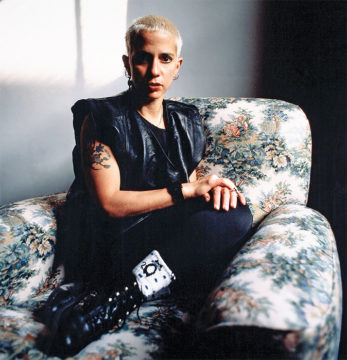 CHRIS KRAUS DID NOT LOVE KATHY ACKER, did not even “like” her, though love and like are mean props in the perpetual war of letters. Kraus did think that this woman, who had slept with her (eventually ex-) husband (Sylvère Lotringer), was “kind of frightening and awesome.” Lotringer of course founded Semiotext(e), the publishing house that Kraus still helms with him and Hedi El Kholti, which also published Acker’s e-mails to Wark cited above and Kraus’s debut novel (I Love Dick,1997) as well as her most recent book (After Kathy Acker, 2017). “To Sylvère, The Best Fuck In The World (At Least To My Knowledge) Love, Kathy Acker,” reads an inscription in a book Kraus finds in Sylvère’s library in I Love Dick. “Pretty stiff competition,” Kraus says. Although Kraus was present for Acker’s life, even inspired by her work, she is not what you would call a “partisan,” and because of this she has written the smartest, cruelest, most intimately clinical, which is to say the best, biography of Acker one could hope for.
CHRIS KRAUS DID NOT LOVE KATHY ACKER, did not even “like” her, though love and like are mean props in the perpetual war of letters. Kraus did think that this woman, who had slept with her (eventually ex-) husband (Sylvère Lotringer), was “kind of frightening and awesome.” Lotringer of course founded Semiotext(e), the publishing house that Kraus still helms with him and Hedi El Kholti, which also published Acker’s e-mails to Wark cited above and Kraus’s debut novel (I Love Dick,1997) as well as her most recent book (After Kathy Acker, 2017). “To Sylvère, The Best Fuck In The World (At Least To My Knowledge) Love, Kathy Acker,” reads an inscription in a book Kraus finds in Sylvère’s library in I Love Dick. “Pretty stiff competition,” Kraus says. Although Kraus was present for Acker’s life, even inspired by her work, she is not what you would call a “partisan,” and because of this she has written the smartest, cruelest, most intimately clinical, which is to say the best, biography of Acker one could hope for.
more here.
Joe Rainey’s Avant-Garde Pow Wow Music
Philip Sherburne at Pitchfork:
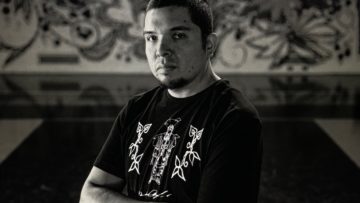 The record is an unusual proposition: A rare fusion of pow wow—an Indigenous culture of music and dance—and experimental electronic production that pairs Rainey’s singing with Broder’s synths and wildly abstract beats. Holding it all together are sampled live recordings of pow wow singing and drumming stretching back decades, many of them made by Rainey himself.
The record is an unusual proposition: A rare fusion of pow wow—an Indigenous culture of music and dance—and experimental electronic production that pairs Rainey’s singing with Broder’s synths and wildly abstract beats. Holding it all together are sampled live recordings of pow wow singing and drumming stretching back decades, many of them made by Rainey himself.
Rainey, 35, is a member of the Red Lake Nation of Ojibwe people. Born in Minneapolis, a Native hub, he has been putting pow wows to tape since he was 8 years old. “Being a recorder at the pow wow got me wanting to learn,” he says. (He maintains an extensive archive of these recordings on SoundCloud.) His mother encouraged his education, signing him up for drum and dance activities, and his entry into the world of inter-tribal social gatherings was fostered by Minneapolis’ flourishing Native community.
more here.
Joe Rainey – no chants
Wednesday Poem
Azza and I Share a Cup of Tea
We find a perfect piece of shade underneath the warm sun,
and Azza pours the tea before she speaks
Azza never looks the same.
Each time you get close enough, each time you think you know her,
she reveals another surface
If you don’t pay attention, you might almost miss it
the way her crisp white toub falls gracefully on her shoulders,
how the gold crescent in her nose accentuates her face tenderly
Azza is timid, but captures your attention
She is not a mere stop on your destination
So, plan to stay awhile.
Listen to the way she uses language to weave stories full of heart
Pay attention to how she sings songs of love
Count the scars and ask her how many battles she has fought
You will be surprised to learn how many of them she’s won.
Sip your tea slowly and know that she will offer you a place to stay
Let her soft voice trickle into your ears, and
Let the cool breeze touch your skin
Global warming will make record-breaking temperatures in India and Pakistan much more frequent
Jude Coleman in Nature:
 Human-induced climate change made the deadly heatwave that gripped India and Pakistan in March and April 30 times more likely, according to a rapid analysis of the event. Temperatures began rising earlier than usual in March, shattering records and claiming at least 90 lives. The prolonged heat has yet to subside. “High temperatures are common in India and Pakistan, but what made this unusual was that it started so early and lasted so long,” said co-author Krishna AchutaRao, a climate scientist at the Indian Institute of Technology in New Delhi, in a press release. “We know this will happen more often as temperatures rise and we need to be better prepared for it,” AchutaRao said.
Human-induced climate change made the deadly heatwave that gripped India and Pakistan in March and April 30 times more likely, according to a rapid analysis of the event. Temperatures began rising earlier than usual in March, shattering records and claiming at least 90 lives. The prolonged heat has yet to subside. “High temperatures are common in India and Pakistan, but what made this unusual was that it started so early and lasted so long,” said co-author Krishna AchutaRao, a climate scientist at the Indian Institute of Technology in New Delhi, in a press release. “We know this will happen more often as temperatures rise and we need to be better prepared for it,” AchutaRao said.
To quantify the role of climate change in the extreme heatwave, a global team of researchers from the World Weather Attribution (WWA) initiative used the average daily maximum temperatures across northwestern India and southeastern Pakistan between March and April to characterize the heatwave. They then compared the possibility of such an event occurring in today’s climate compared with the climate in pre-industrial times, using a combination of climate models and observation data going back to 1979 in Pakistan and 1951 in India.
The team found that climate change increased the probability of the heatwave occurring to once in every 100 years; the odds of such an event would have been once every 3,000 years in pre-industrial times, says Zeke Hausfather, a climate scientist and researcher at Berkeley Earth, a non-profit organization in California that focuses on climate change and analysis of global temperatures. The researchers also show that the event was around 1 ºC warmer than it would have been in a pre-industrial climate.
More here.
The ‘straight, white, Christian, suburban mom’ taking on Republicans at their own game
David Smith in The Guardian:
 Mallory McMorrow remembers the sting of being slandered by a colleague for wanting to “groom” and “sexualize” young children. “I felt horrible,” she says. But instead of shrugging it off or trying to change the subject, as Democrats are often criticised for doing, the state senator from Michigan decided to fight back. In just four minutes and 40 seconds, McMorrow delivered a fierce, impassioned floor speech at the state capitol that went viral on social media and earned a laudatory phone call from the US president. She also offered a blueprint for how Democrats can combat Republicans intent on making education a wedge issue. The New Yorker magazine described her as “a role model for the midterms”. The New York Times newspaper added: “If Democrats could bottle Mallory McMorrow … they would do it.”
Mallory McMorrow remembers the sting of being slandered by a colleague for wanting to “groom” and “sexualize” young children. “I felt horrible,” she says. But instead of shrugging it off or trying to change the subject, as Democrats are often criticised for doing, the state senator from Michigan decided to fight back. In just four minutes and 40 seconds, McMorrow delivered a fierce, impassioned floor speech at the state capitol that went viral on social media and earned a laudatory phone call from the US president. She also offered a blueprint for how Democrats can combat Republicans intent on making education a wedge issue. The New Yorker magazine described her as “a role model for the midterms”. The New York Times newspaper added: “If Democrats could bottle Mallory McMorrow … they would do it.”
…Why did the speech strike such a chord? McMorrow suggests that Democrats have been afraid of talking about religion and faith openly while Republicans have sought to weaponise Christianity and create the illusion that they speak on behalf of all white suburban mothers. She reflects: “It feels like Democrats have ceded ground to the Republican party on Christianity and religion and family values and patriotism. Waving a lot of American flags tends to be associated with the Republican party now despite the fact that many of my colleagues supported the insurrection [in Washington on January 6, 2021].
More here.
The Fiction That Dare Not Speak Its Name
Morten Høi Jensen in Liberties:
 Pity literary biographers. There are few writers less appreciated, there are none more despised. There they sit, with their church bulletins of family trees and their dental records, their interviews with ex-lovers, mad uncles, and discarded children, and go about “reconstructing” the life of someone they never knew, or knew just barely. To George Eliot, biographers were a “disease of English literature,” while Auden thought all literary biographies “superfluous and usually in bad taste.” Even Ian Hamilton, the intrepid chronicler of Robert Lowell, J. D. Salinger, and Matthew Arnold, thought that there was “some necessary element of sleaze” to the whole enterprise.
Pity literary biographers. There are few writers less appreciated, there are none more despised. There they sit, with their church bulletins of family trees and their dental records, their interviews with ex-lovers, mad uncles, and discarded children, and go about “reconstructing” the life of someone they never knew, or knew just barely. To George Eliot, biographers were a “disease of English literature,” while Auden thought all literary biographies “superfluous and usually in bad taste.” Even Ian Hamilton, the intrepid chronicler of Robert Lowell, J. D. Salinger, and Matthew Arnold, thought that there was “some necessary element of sleaze” to the whole enterprise.
And yet biographies of writers continue to excite the reading public’s imagination. Last year alone saw big new accounts of the lives of W. G. Sebald, Fernando Pessoa, Philip Roth, Tom Stoppard, D. H. Lawrence, Elizabeth Hardwick, H.G. Wells, Stephen Crane, and Sylvia Plath. The most controversial of these, of course, was Blake Bailey’s biography of Roth, which was withdrawn by its publisher just a few weeks after it appeared owing to accusations against Bailey of sexual assault and inappropriate behavior.
More here.
How Australia Saved Thousands of Lives While Covid Killed a Million Americans
Damien Cave in the New York Times:
 Both countries are English-speaking democracies with similar demographic profiles. In Australia and in the United States, the median age is 38. Roughly 86 percent of Australians live in urban areas, compared with 83 percent of Americans.
Both countries are English-speaking democracies with similar demographic profiles. In Australia and in the United States, the median age is 38. Roughly 86 percent of Australians live in urban areas, compared with 83 percent of Americans.
Yet Australia’s Covid death rate sits at one-tenth of America’s, putting the nation of 25 million people (with around 7,500 deaths) near the top of global rankings in the protection of life.
Australia’s location in the distant Pacific is often cited as the cause for its relative Covid success. That, however, does not fully explain the difference in outcomes between the two countries, since Australia has long been, like the United States, highly connected to the world through trade, tourism and immigration. In 2019, 9.5 million international tourists came to Australia. Sydney and Melbourne could just as easily have become as overrun with Covid as New York or any other American city.
More here.
The history of the British Empire’s violence
Howard W. French in The Nation:
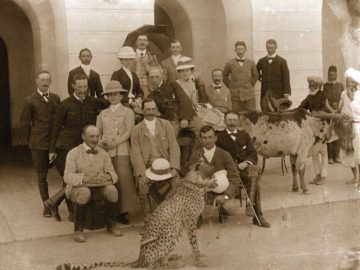 In 2005, Britain’s then–Labour chancellor of the exchequer, Gordon Brown, chose the backdrop of Tanzania to make a dramatic statement about his nation’s unmatched record of imperial conquest and rule. “The time is long gone,” he said, “when Britain needs to apologize for its colonial history.” The choice of locale for such a proclamation was, to be charitable, curious. A braver stage would have been Kenya, to pick an African nation that had experienced horrific violence during its independence struggle from British colonial rule, or India or Malaya, where extreme and brutal measures to sustain imperial control had been carried out on an even greater scale. But here we were, nonetheless.
In 2005, Britain’s then–Labour chancellor of the exchequer, Gordon Brown, chose the backdrop of Tanzania to make a dramatic statement about his nation’s unmatched record of imperial conquest and rule. “The time is long gone,” he said, “when Britain needs to apologize for its colonial history.” The choice of locale for such a proclamation was, to be charitable, curious. A braver stage would have been Kenya, to pick an African nation that had experienced horrific violence during its independence struggle from British colonial rule, or India or Malaya, where extreme and brutal measures to sustain imperial control had been carried out on an even greater scale. But here we were, nonetheless.
Brown’s speech reflected the slow and creaky rotation of the wheel not so much of history but of historiography. Mirroring 19th-century historians’ and politicians’ polished encomiums to a beneficent British Empire, the speech brought elite assessments of Britain’s unparalleled dominion over one quarter of the globe, and over a similar fraction of the human population, almost full circle.
More here.
How does the brain retrieve memories, articulate words, and focus attention?
Is Anna Wintour human?
Lynn Barber in The Spectator:
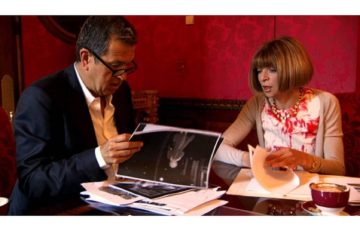 Apparently Anna Wintour wants to be seen as human, and Amy Odell’s biography goes some way to helping her achieve that aim. Nearly all the photographs show her smiling, looking friendly, even girlish. And the text quite often mentions her crying. On 9 November 2016 she cried in front of her entire staff because Hillary Clinton lost the election. But then she immediately set about trying to persuade Melania Trump to do a Vogue shoot. Melania, another tough cookie, refused unless she was guaranteed the cover.
Apparently Anna Wintour wants to be seen as human, and Amy Odell’s biography goes some way to helping her achieve that aim. Nearly all the photographs show her smiling, looking friendly, even girlish. And the text quite often mentions her crying. On 9 November 2016 she cried in front of her entire staff because Hillary Clinton lost the election. But then she immediately set about trying to persuade Melania Trump to do a Vogue shoot. Melania, another tough cookie, refused unless she was guaranteed the cover.
Dame Anna has been the editor of American Vogue since 1988 and holds a position of extraordinary power in the fashion world. Designers, photographers, models and celebs tremble to obey her whim. At 72, she now seems impregnable, in that she is the creative director of all Condé Nast magazines, from Vogue down to Golf Digest and Wired. But of course this is a print empire, which means she could be the last empress.
We know Wintour best from The Devil Wears Prada, the 2006 film based on a novel by her former assistant Lauren Weisberger. Everything in Odell’s biography confirms its accuracy – the relentless perfectionism, the exhausting work routine, up at 5 a.m., tennis or workout, followed by half an hour of hair and makeup before entering the office, where assistants wait to hand her coffee, then a day of back-to-back meetings. Everything is work. She doesn’t believe in wasting time, so no small talk, no pleasantries, no explanations. And she will get up from lunch after 45 minutes, whether or not her guests are still eating.
More here.
Climate change could lead to a net expansion of global forests. But will a more forested world actually be cooler?
Fred Pearce in Science:
 These are strange times for the Indigenous Nenets reindeer herders of northern Siberia. In their lands on the shores of the Arctic Ocean, bare tundra is thawing, bushes are sprouting, and willows that a generation ago struggled to reach knee height now grow 3 meters tall, hiding the reindeer. Surveys show the Nenets autonomous district, an area the size of Florida, now has four times as many trees as official inventories recorded in the 1980s. In some places the trees are advancing along a wide front, but in other places the gains are patchier, says forest ecologist Dmitry Schepaschenko of the International Institute for Applied Systems Analysis in Austria, who has mapped the greening of the Siberian tundra. “A few trees appear here and there, and some shrublike trees become higher.”
These are strange times for the Indigenous Nenets reindeer herders of northern Siberia. In their lands on the shores of the Arctic Ocean, bare tundra is thawing, bushes are sprouting, and willows that a generation ago struggled to reach knee height now grow 3 meters tall, hiding the reindeer. Surveys show the Nenets autonomous district, an area the size of Florida, now has four times as many trees as official inventories recorded in the 1980s. In some places the trees are advancing along a wide front, but in other places the gains are patchier, says forest ecologist Dmitry Schepaschenko of the International Institute for Applied Systems Analysis in Austria, who has mapped the greening of the Siberian tundra. “A few trees appear here and there, and some shrublike trees become higher.”
All around the Arctic Circle, trees are invading as the climate warms. In Norway, birch and pine are marching poleward, eclipsing the tundra. In Alaska, spruce are taking over from moss and lichen. Globally, recent research indicates forests are expanding along two-thirds of Earth’s 12,000-kilometer-long northern tree line—the point where forests give way to tundra—while receding along just 1% (see map, below).
More here.
